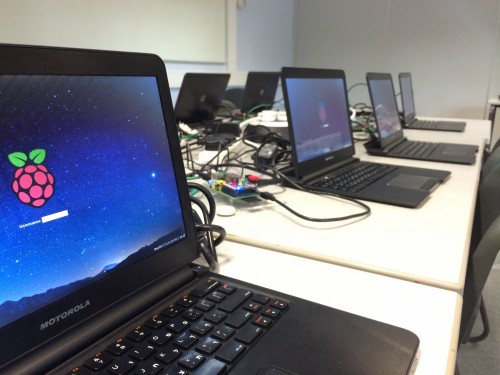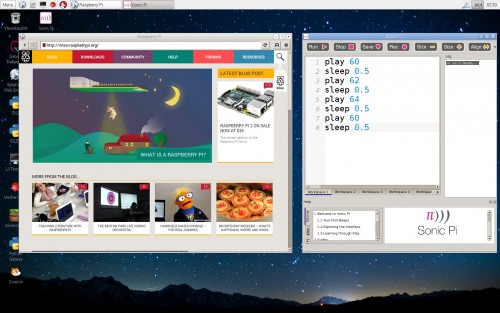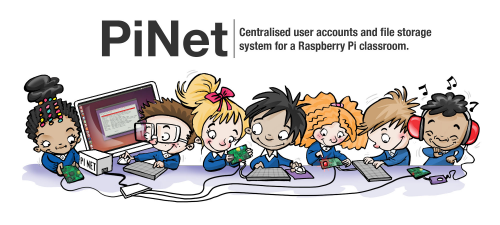| Helen: Over the past year and a half, Raspi-LTSP has become very popular as a simple and easy-to-set-up way of managing Raspberry Pi users and files in a classroom setting. Today its 18-year-old developer Andrew Mulholland launches PiNet, the new incarnation of this very valuable, free, open source project. He’s written us a guest post to tell you more about it.
For nearly two years now, I have been working on RaspberryPi-LTSP. The goal setting out was clear: a simple, free and easy-to-use system for schools that allowed them to manage their Raspberry Pis more easily. So today I am proud to announce PiNet, the replacement for RaspberryPi-LTSP. The idea for PiNet/Raspi-LTSP was spawned out of a workshop I was teaching two years ago in a local primary school. The workshop ran over two days and I had forgotten to install a piece of software on all the SD cards before cloning them. I also had somehow to remember which student's work was on which SD card so I could hand it out to them the next day. Logistically, managing it was a bit of a nightmare! And I only had one class of kids to worry about. How can you manage students' work when you have perhaps hundreds of different students using a set of Raspberry Pis in a week? Does each student get assigned her or his own SD card? And what happens when those SD cards need to be updated with the most recent software update? After many (many) hours of work researching possible solutions, I came up with a proof-of-concept script. The script used LTSP (Linux Terminal Server Project) to build a virtual Raspbian operating system on a server, then let Raspberry Pis network boot off it. I released this on GitHub back in September 2013 not expecting much to come of it. Rather surprisingly, people slowly started playing around with it, I started getting emails with new ideas and I discovered there was an interest in the project.  A PiNet classroom, using Motorola lapdocks to provide display, keyboard and trackpad 200+ commits and 3000+ lines of code later, the feature list has grown after a huge amount of feedback from educators right across the world. PiNet's features include:
PiNet is a replacement for Raspi-LTSP, not an upgrade, so if you're already running Raspi-LTSP, you'll need a new installation to get PiNet running on your server (PiNet will automatically update your SD cards the first time you boot up your Raspberry Pis after installing it, so you don't need to make any changes to those yourself). To make everything as easy as possible, a migration utility has been included in every Raspi-LTSP release since November to allow you to migrate user data and files to PiNet; read the migration guide for help doing this.  The Raspberry Pi desktop with PiNet is like the one you're used to Here are some of the things that other people have said about PiNet/Raspi-LTSP:
PiNet is already used across the world in over 30 different countries. To give it a go in your school, all you need is an old computer, a router and some networked Raspberry Pis! To get started, head over to the PiNet website at http://pinet.org.uk/ and hit Get Started! |
A Semi-automated Technology Roundup Provided by Linebaugh Public Library IT Staff | techblog.linebaugh.org
Monday, March 23, 2015
Raspi-LTSP is now PiNet: easily manage a Raspberry Pi classroom
Subscribe to:
Post Comments (Atom)

No comments:
Post a Comment